Assess barriers and facilitators to knowledge use
Index
Planning for change requires an assessment of barriers and facilitators. By assessing the barriers and facilitators of the change to be made and the context in which the change is occurring, change teams can be better equipped to develop effective implementation strategies. Learn more in the section below.

What is this phase?
In the previous phase, “Adapt knowledge to the local context,” you and your change team identified unique characteristics of your practice setting. This phase is about identifying potential barriers that may limit the uptake of knowledge and/or impede your change initiative, as well as facilitators that can improve the likelihood of success in your setting. This step aims to target and overcome barriers and take advantage of facilitators to maximize positive outcomes (Graham et al., 2006; RNAO, 2002; RNAO, 2012).
Regardless of the scope of your practice change, it is important to clearly understand the uniqueness of your setting by identifying what prevents you or your end users to use the knowledge in question. With this information, you will be able to select strategies that directly address the identified barriers and take advantage of existing facilitators (Health Canada, 2017). In this phase, you will learn more about various types of barriers and facilitators.
Barriers may impede success
Facilitators enable success
Factors, such as an organizational culture or leadership style can be either a facilitator or a barrier depending on the context. For example, an organizational culture that is not receptive to change may be a barrier to implementing a new practice or intervention. Staff may not be as interested because changing their practices is not the way they do work in their setting. On the other hand, a culture that is open to change may be a facilitator to implement the practice, or intervention, because staff may already be used to having innovations introduced in their work setting.
A few points to keep in mind:
- The success of your change initiative depends on multiple factors at different levels (micro, meso, macro).
- Factors can affect your change initiative at different stages during the change process – for example, planning changes, putting changes in place, or measuring outcomes).
- Barriers are often interconnected
Depending on your context, some barriers may have a greater influence than others. For example, a workplace culture that is resistant to change could impact the change initiative at several levels.
Why is this phase important?
This phase will help you answer these questions (Health Canada, 2017):
- What barriers could limit or prevent providers or patients/persons from using the knowledge?
- What can my team do to reduce the identified barriers?
- What could facilitate the use of knowledge in my setting?
- What can my team do to take advantage of identified facilitators?
Remember: Identifying barriers and facilitators helps you identify implementation strategies for your change initiative. It can also help prevent mistakes and frustrations.
When strategies are designed to address barriers and enhance facilitators, change initiatives are:
- feasible
- acceptable to staff
- less costly
- sustained
Examples of common barriers and facilitators
Barriers and facilitators have been classified in many different ways. Here are some examples of common barriers and facilitators identified in the literature at the micro, meso and macro levels, as well as characteristics of the change or intervention itself (Geerligs et al., 2018; Holleman et al., 2009; Solomons and Spross, 2011; Vogel et al., 2016).
Micro (individual) factors
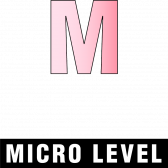
Attitude, knowledge and skills of staff
- negative attitudes and beliefs towards the change initiative or the tasks involved in carrying out the change
- lack of capacity to influence change
- lack of confidence or overcome barriers posed by the target population and their work environment
- lack of awareness of or access to evidence, or the knowledge and skill to use it
- concerns that colleagues do not use or value evidence
- concerns that evidence is not relevant to staff or the population served, or that using guidelines will reduce autonomy or interfere with individualized care
- positive attitudes and beliefs about the change initiative
- high commitment to the change initiative
- staff members who are knowledgeable about the evidence and have the skills to carry out the change initiative
- changes align with work roles and responsibilities
- colleagues value evidence
- a belief that the use of evidence improves practice, decision-making and communication with colleagues
- accessible evidence that is fast and easy to access at the point of care and integrated into the workflow (for example, via flowcharts or algorithms)
Meso (organizational) factors
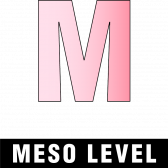
Organizational Culture
- an organizational culture that is resistant to change
- a culture where blaming others is common
- a risk-averse culture
- a common sentiment that “this is how it has always been done”
- major organizational changes that distract or overwhelm the staff.
- a culture that is open to innovation, revitalization and change
- an organizational priority for evidence-informed practice and continuous quality improvement
- a collaborative workplace where people openly exchange ideas
Leadership
- hierarchical leadership
- authoritarian leaders
- lack of effective communication
- lack of role clarity
- transformational and authentic leaders
- supportive leadership at multiple levels (for example, from point of care staff through to senior executives)
- formal leaders are present and show visible support and enthusiasm for evidence-informed practice and change initiatives
- leaders support risk-taking and encourage staff to propose new ideas and share decision-making
Resources
- lack of time to implement changes
- lack of appropriate supplies, technology, well-functioning equipment, staffing, or computer access
- time and support for learning, mentorship and multidisciplinary collaboration
- financial and human resources to support the change initiative
Staff engagement
- lack of authentic engagement by staff in the change initiative
- late engagement in the change process
- perceptions that one group has all the knowledge
- staff feel ownership of the change initiative
- staff are involved in designing practice and policy changes and feel like their ideas are valued
- there are multidisciplinary discussions and open communication
- champions work to motivate peers, educate, role model best practices, and evaluate the change initiative.
Macro (system) factors
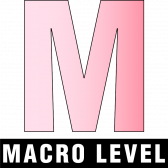
Policy
- Lack of policies to mandate the change
- Lack of policies to support the implementation
- Existing government policies prohibit the implementation of the change.
- Existing policies in place to support the implementation
- The government recognizes the need for health policy changes to accommodate for new practice changes.
Characteristics of the change or intervention
- the change initiative is complex
- the change initiative is costly
- the change initiative is not acceptable to the organization, staff or persons/patients and families
- goals or implementation strategies are unclear.
- the change initiative fits well with the context or culture of the organization
- the goals and methodology of the change initiative are clear
- the change can adapt to the setting.
Case studies
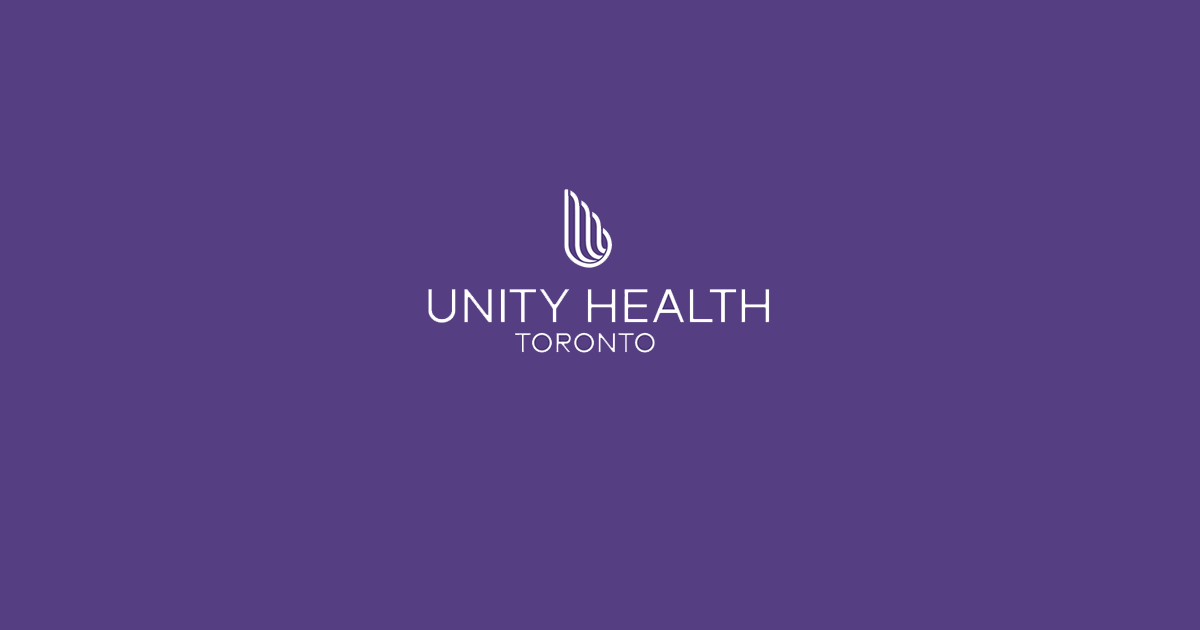
Facilitating an evidence-based culture at Unity Health Toronto - St. Michael’s Hospital
Unity Health Toronto - St. Michael’s Hospital, a Best Practice Spotlight Organization® (BPSO®) in Toronto, Canada, has embedded evidence-based practices into its culture and daily work processes. Evidence-based practice is part of the hospital’s corporate strategy. It has invested resources to build a critical mass (over 30 per cent) of staff members who are best practice champions.

The hospital also provides multiple capacity-building opportunities, including a community of practice, boot camps, booster sessions and mentorship. The annual Nursing Week Gallery Walk, depicted in the image above, is just one way that St. Michael’s Hospital profiles the work of champions and others dedicated to using evidence to inform change initiatives.
SOURCE: Transforming Nursing Through Knowledge, 2018.

Overcoming barriers to evidence-based practice – Lessons learned from DongZhiMen Hospital and Beijing University of Chinese Medicine (BUCM) School of Nursing
DongZhiMen Hospital and Beijing University of Chinese Medicine (BUCM) School of Nursing are international BPSOs in Beijing, China. They identified barriers to the use of evidence in practice including heavy workloads, cultural differences and reluctant attitudes about using evidence to inform practice. The assessment and identification of barriers allowed change teams to develop effective strategies for implementation with the input of stakeholders.
For example, for the implementation of the RNAO best practice guideline Assessment and management of foot ulcers for people with diabetes, barriers included
- nursing shortages across China,
- a lack of training to support the development of knowledge and skills in evidence-based nursing practice,
- the costs of guideline implementation. and
- practice recommendations that exceeded local nursing scope.
SOURCE: Transforming Nursing Through Knowledge, 2018.
Practice tips
- Assemble a team to support the overall change initiative. Don’t do this work alone.
- Listen early and often to understand people’s beliefs about the change initiative, whether or not they support the change and why.
- Engage staff early and often to identify barriers and facilitators.
- Engage staff to generate strategies to address barriers.
- Identify the benefits:
- Address the questions: “What’s in it for me?”
- Identify other benefits for persons/patients, staff, and the organization.
- Ensure ownership of the change initiative from staff through active engagement.
- Provide opportunities for feedback throughout the change process.
- Whenever possible, and if appropriate, adopt recommendations from staff as they are generated.
- Use champions to help create ‘bottom-up’ support. Champions can educate, mentor, audit and evaluate the change initiative and the use of best practices.
Example: Listen to Sheila Doering, a nurse with the Food is Medicine initiative, talk about creating change in the work environment. She emphasizes the need to include everybody in creating change “to draw on their experiences to foster creativity and ingenuity.” Learn more about the Food is Medicine initiative online.
Accelerate your success: The Social Movement Action Framework’s element “Networks of people and resources” can help you and your team gather more information on the barriers and facilitators in your local setting. These networks may also act as key informants to help you understand what other factors you may want to consider before you implement your change. Further, networks may also provide you with resources and tools to help you efficiently leverage facilitators or address barriers.
KTA tools

Applying pragmatic and valid tools can support change teams to accurately measure barriers and facilitators to knowledge use and strengthen their understanding of these factors. A tool’s results and analysis also help change teams prepare for the next action cycle phase, “Select, tailor and implement interventions”.
For each tool, we provide two documents:
- a summary page that includes the tool’s purpose, description and applicable action cycle phases
- a companion document that details the tools’ pragmatic and psychometric properties.
*All of the tools can also be considered for use during the action cycle phase: Monitor knowledge use.
**All of the tools can be considered for use during the action cycle phases: Identify the problem/Determine the know/do gap and Monitor knowledge use.
Additional resources for the KTA tools:
View a summary table of all of the tools included in the Leading Change Toolkit, what they measure and in which of the action cycle phases they can be applied.
Read more about considerations for change teams using KTA tools including the how-tos of selecting a tool, implementing it, and determining the next steps for follow-up.
Valid KTA Tools
Check your progress
- You have engaged a team with different perspectives to support this change initiative.
- You have used a structured approach to collect information about barriers and facilitators.
- You have engaged persons, families and others to interpret the results and generate ideas.
- You are designing implementation strategies to address barriers.
- You have identified ways to maximize facilitators.
Linking this phase to other framework components
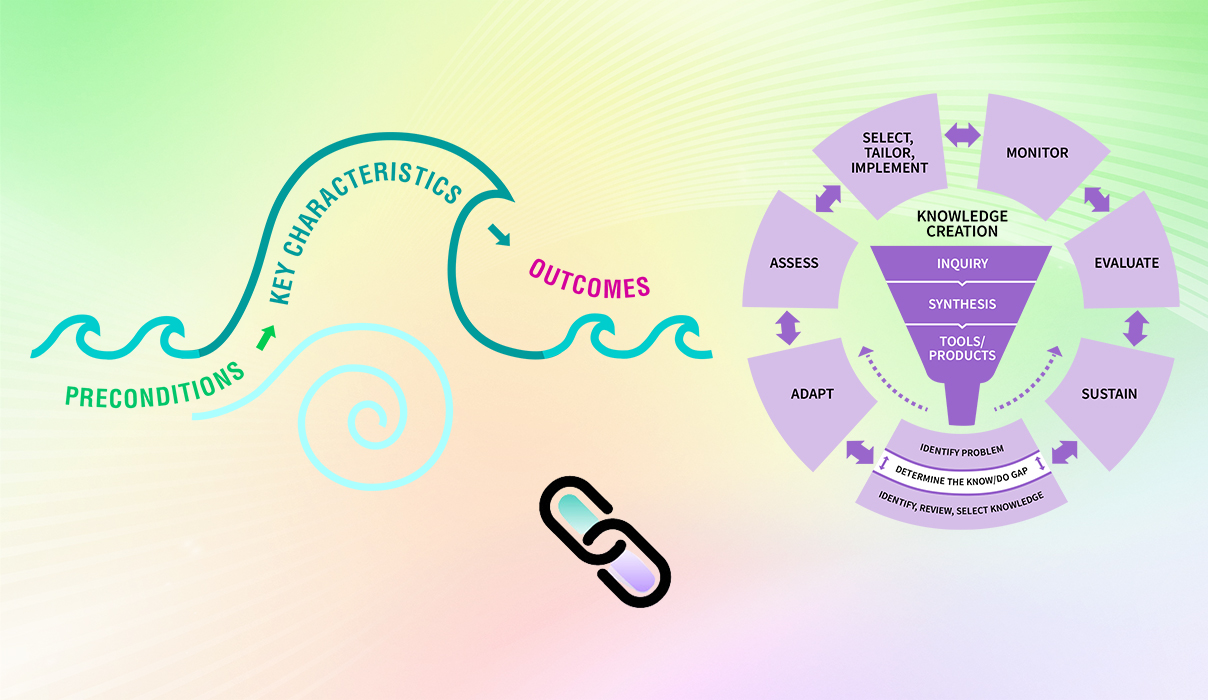
Linking this phase to the elements of the Social Movement Action Framework
Your change team’s capacity in the “Assessing barriers and facilitators of knowledge use” phase may be enhanced or accelerated by adding in some of the elements of the SMA Framework, as the two frameworks are complementary and together accelerate change uptake and sustainability. In addition to the linking example described earlier in this section, there can be many other points of connection between the two frameworks. Below are three examples for you to consider:
- Change is valued: When the identified problem or shared concern is seen as valued by health professionals, patients/persons and their families, and others in the local context, it acts as a positive driver for change.
- Emerging leadership: In social movements, emerging leaders are opinion leaders and influencers of change, often seen as key facilitators and mobilizers. Identifying emerging leaders and assessing these leaders’ impact on your implementation can help you determine whether they can be helpful to your change initiative.
- Collective identity: The assessment of facilitators and barriers can also include the presence or absence of a collective identity. Identifying the presence and meaning of collective identity and assessing its impact on your implementation can be helpful for change teams to determine whether it acts as a facilitator or barrier.
For more discussion about the dynamic links between the elements of the SMA Framework to the KTA Framework, see the section "Two complementary frameworks".
Getting ready for the next phase: Once you have identified barriers and facilitators, the next phase on selecting, tailoring and implementing interventions can help identify strategies that you can use to address barriers or leverage facilitators. The strategies you select and use depend on the barriers and facilitators you have identified in your context. Careful planning is strongly recommended to ensure that you apply strategies effectively.


